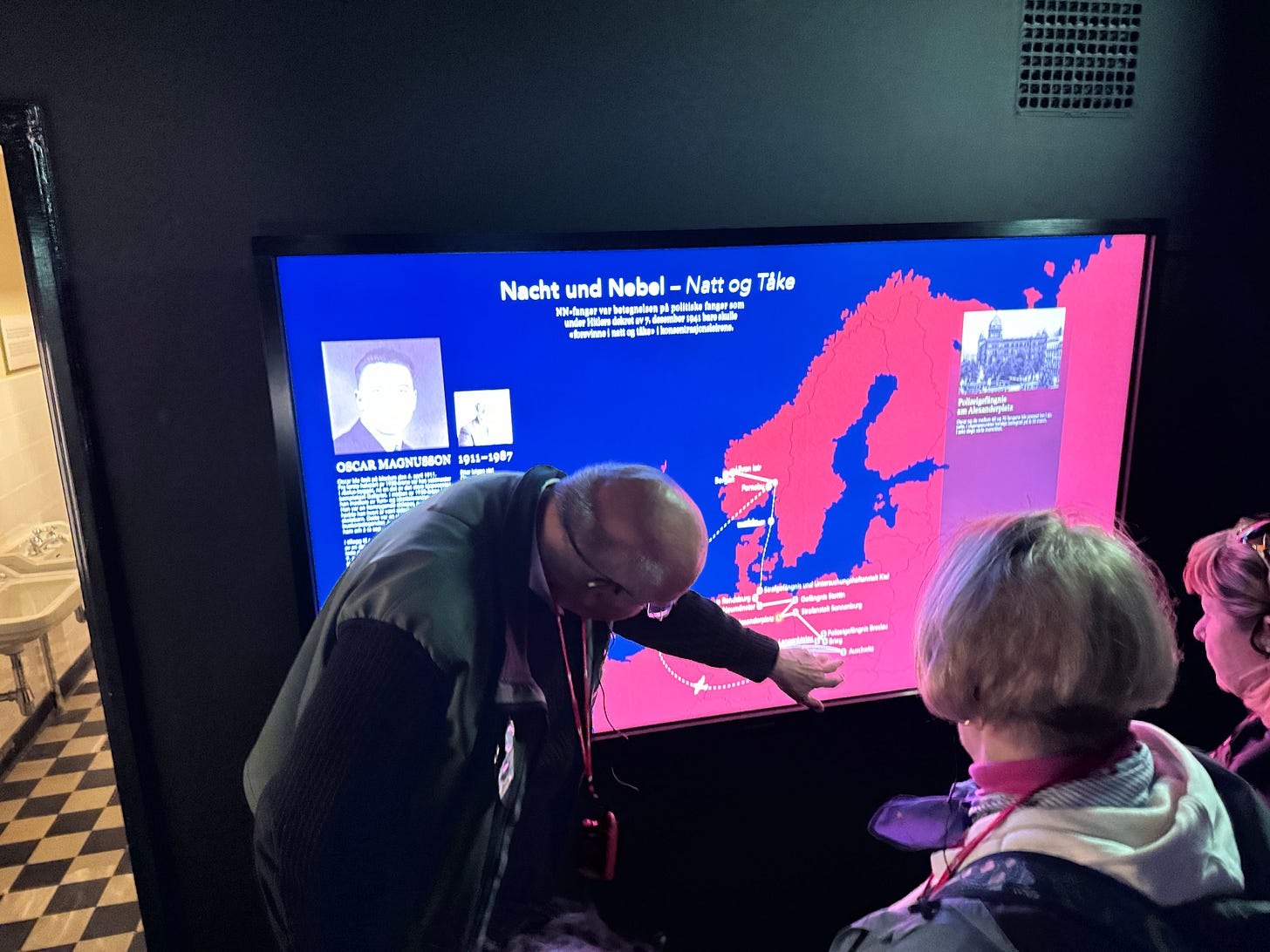Bergen and Norway at War
From the waiting list, I was able to squeeze onto the 6-hour tour, "Bergen at War," and I learned a lot! Rita stayed on the ship and did laundry and her nails...
Although the focus was ultimately on World War II, this tour covered the history of Norway going back 1,000 years or more. We toured the fortress/castle next to where we were docked and a museum nearby. Then we got on a bus to the North Sea Traffic Museum, an unusual name for a World War II museum in a town on the coast where Norwegians slipped out of the country to the Shetland Islands to serve the Norwegian government in exile and in a Norwegian regiment of the British armed forces. The same fishing boats that evacuated Norwegians to the Shetlands returned with weapons and supplies for the Resistance. The Germans caught on eventually and burned all the buildings and separately imprisoned the men, women and children. The museum tells their story. If you’ve got 20 minutes to learn more about their very personal experiences, I recorded the museum’s movie on my iPhone. I wouldn’t insert it if it weren’t worth watching.
Here’s a screenshot from the museum’s website:
Returning to Bergen, we visited the Gestapo Museum, on the 4th floor of the former Gestapo headquarters building, which is occupied by ordinary businesses on the other floors. Our excellent guide had a personal connection with three of the people who are featured in that museum, which really brought it home for the 20 of us on the tour. Here’s a picture of a room used for torturing detainees, with some of the actual torture tools.
Before walking into the building, our guide (sorry, I never got his name) pointed out three plaques in the sidewalk commemorating three detainees who leapt to their death from a top floor of the building rather than be tortured, knowing they might reveal names or information they shouldn’t.
In this picture, he is using a touch screen to show the itinerary of a detainee who was arrested in Bergen and detained here but ended up in various places before dying in a German death camp.
As you can imagine, it was a most informative, disturbing and yet inspiring day about a time in history which those of us on the tour don’t have in our American heritage.
Back on the ship after the 6-hour tour, Rita informed me that the port talk for the Shetland Islands was canceled, along with all the shore excursions, because the seas are too rough for the ship to dock there on Saturday. We’ll be bypassing it and going to our next port of call, which is the Faroe Islands.
The 6:30 lecture was by Professor Gary Evans on “Norway in World War II,” but he had joined us on the tour today, during which he and I chatted a bit, and I had pretty much learned everything in his lecture. One new thing I learned was about the efforts of Hitler to build an atomic bomb, using “heavy water” extracted from a hydroelectric station in Norway. The Brits were onto that effort, however, and bombed the town where the station was located until the Germans abandoned the effort.
Tonight, we set our clocks back one hour. Tomorrow we’ll be only 7 hours ahead of Denver.








I have read a couple of books about the resistance in Norway, but one of them was about a teenager. I had not heard about the torture room. Thanks!